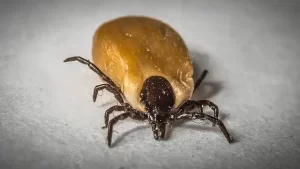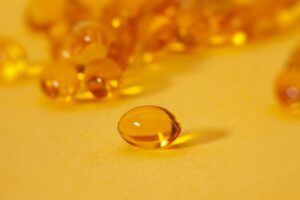Where is the drug for the treatment of COVID-19?
- Engineered Soybeans with Pig Protein: A Promising Alternative or Pandora’s Dish?
- Severe Fever with Thrombocytopenia Syndrome (SFTS): A Tick-Borne Threat with High Mortality
- Why Isolating Bananas Extends Their Shelf Life?
- This common vitamin benefits the brain and prevents cognitive decline
- New report reveals Nestlé adding sugar to infant formula sold in poor countries
- Did Cloud Seeding Unleash a Deluge in Dubai?
Where is the drug for the treatment of COVID-19?
- Red Yeast Rice Scare Grips Japan: Over 114 Hospitalized and 5 Deaths
- Long COVID Brain Fog: Blood-Brain Barrier Damage and Persistent Inflammation
- FDA has mandated a top-level black box warning for all marketed CAR-T therapies
- Can people with high blood pressure eat peanuts?
- What is the difference between dopamine and dobutamine?
- What is the difference between Atorvastatin and Rosuvastatin?
- How long can the patient live after heart stent surgery?
Where is the drug for the treatment of COVID-19? The COVID-19 epidemic currently causes 110 million infections and more than 2.65 million deaths, which has had a huge impact on various fields around the world.

In the “World Economic Outlook Report” [1] released by the International Monetary Fund (IMF) in January 2021: In addition to China’s economic growth of 2.3% (there should be applause here), the global economy has shrunk by 3.5%, and a loss of 11 trillion in 2020 It is predicted that the cumulative economic loss during 2020-2025 may be as high as 28 trillion U.S. dollars, making it the most serious economic recession since World War II.
Through the treatment of large-scale epidemic diseases in human history, it can be seen that the most effective method is still the combination of “defense + treatment”. Although all countries are actively developing and purchasing vaccines in large quantities, and adopting physical protection, isolation and epidemic prevention measures, the last gap in the fight against the COVID-19 epidemic-effective oral drugs for treatment, has not yet been fully resolved.
Remdesivir (remdesivir, research and development number GS-5734, trade name Veklury®) is a broad-spectrum antiviral drug developed by Gilead Sciences. It is the only anti-coronavirus injection drug officially approved by the US FDA, and it has been given the reputation of “people’s hope”.
Is this medicine really the so-called “magic medicine”?
1. How much is Remdesivir worth?
It is precisely because of the outbreak of the COVID-19 epidemic that gave “the hope of the people”-Remdesivir the opportunity to go public.
In the United States, a course of Remdesivir is priced at US$3,120 and a bottle of US$520. Gilead’s annual financial report released on February 4, 2021 showed that [2], under the circumstance of declining sales of other antiviral drugs such as HCV, Remdesivir has contributed $2.8 billion in sales to Gilead.
It also increases Gilead’s total sales in 2020 by 10% compared to 2019 to US$24.4 billion.
Although remdesivir is already on the market, in many developing countries or countries with poor medical conditions, people usually can’t afford or use it, and even in developed countries, not everyone can afford such expensive drugs.
2. Difficult to distinguish between true and false “magic medicine”
Remdesivir, which can bring huge economic benefits to Gilead, will naturally attract countless eyes as a popular fried chicken in the medical industry in 2020.
However, the political, press, economic and financial, medical, and scientific circles have different attitudes towards it from different perspectives and positions.
The mixed information of multiple factors has led to the uncertainty of the efficacy of the drug, which has severely split the speech that Redecivir is a “magic drug”.
FDA Approval-Data from several randomized controlled clinical trials of Remdesivir, including hospitalized patients with mild to moderate new coronavirus pneumonia, proves that Remdesivir is better than placebo in improving the symptoms of patients. Therefore, the US FDA in 2020 On October 22, the listing of Radixivir was approved. At present, there are about 1 million people using Remdesivir, and there are no serious adverse reactions.
Clinical report 1:
On October 8, 2020, the “New England Journal of Medicine” released the final report of the clinical trial of Radixivir [3] The data showed that the 10-day course of Radixivir was better than placebo; when severe symptoms appeared Before the need to use the ventilator, the patient’s recovery time was shorter, which may prevent the deterioration of respiratory diseases; but it did not reduce the patient’s mortality rate.
Clinical report 2:
On December 2, 2020, the “New England Journal of Medicine” released the World Health Organization (WHO) “Unity Trial” report [4], the results showed: 4 kinds of experimental drugs-Redecivir, Hydroxy Chloroquine, lopinavir/ritonavir, and interferon all had little improvement in the overall mortality, risk of mechanical ventilation, and length of stay in hospitalized patients with new coronavirus infection.
At present, there are still 76 clinical trials on the efficacy of Remdesivir in the world (data source: Yaodu data), including 48 in the United States and 28 in international clinical trials, including children under 18 years of age and COVID-19 pregnancy Clinical trials of safety and effectiveness in patients.
Inconsistent opinions on the efficacy of Radixivir in clinical medicine may be due to multiple reasons, such as the patient’s age, gender, consistency in evaluation of disease severity, other options used in the treatment process, and the accuracy of death statistics.
The conclusion of the final report. Therefore, whether remdesivir is effective in clinical practice requires more rigorous and scientifically designed and comparable clinical data to support it.
A drug whose efficacy has not been fully confirmed is still widely used in clinical practice. This is not only due to the fear of the virus, but also due to the lack of other specific drugs.
Therefore, the market has an extremely urgent demand for a drug with low price and good antiviral effect.
3. The prodrug of the original drug was smoked
The original medicine is the active ingredient in the medicine. Prodrugs are compounds in which the original drug molecule itself is modified to introduce other chemical functional groups. Turning the original drug into a prodrug is to better solve the problems that may exist in the original drug, such as the absorption, targeting and action time of the drug.
With the structure shown in Figure 3, Remdesivir is a nucleoside analogue. Nucleoside is one of the nucleotide components involved in the composition of DNA or RNA. It is formed by condensation of purine or pyrimidine base with ribose.
The active metabolite of Remdesivir-the original drug GS-441542 (blue) is an analog of adenosine, which can also form hydrogen bonds with uridine. Excluding the nucleoside part (blue), the remaining black part of the structure is the prodrug side chain of Redecivir.
Because the virus cannot provide the raw materials for replication, it is completely dependent on the surrounding environment. Therefore, the Radixivir metabolite GS-441524 can be disguised as adenosine (blue) required for virus replication and assembled in the RNA fragments that are being replicated.
In addition to the modification of adenine bases (red), GS-441524 also introduces linear cyano groups (green), as shown in Figure 4.
The cyano group in GS-441524 after single phosphorylation will produce steric hindrance with the side chain of serine S861 in RNA polymerase during virus replication [5], as shown in Figure 5, which may cause the position of RNA to be distorted. Hinder translocation.
Therefore, the mixing of the monophosphate of the Radixivir metabolite GS-441524 will cause errors in the replication process and block the replication of the virus.
This is the possible principle and mechanism of the antiviral activity of Radixivir. It can be seen from the above that it is the metabolite GS-441524 of Radixivir that affects the virus replication, not Radixivir itself as a prodrug.
In fact, Gilead has already carried out many antiviral studies on GS-441524 in 2012. This nucleoside analog has broad-spectrum antiviral activity in many viruses, such as hepatitis C virus, influenza A, parainfluenza, coronavirus, etc. [6].
The most well-known application of GS-441524 is as the main drug for treating infectious peritonitis in cats [7] (a disease caused by feline coronavirus), commonly known as “441”. The experimental effective dose of the cat abdominal drug reported in the literature was 2-4 mg/kg. After the treatment, 18 of the 26 cats did not relapse.
The condition of other cats was also relieved, the treatment effect was better than expected, and the safety was fair. Therefore, although “441” is not on the market, it has been used as an injection by pet hospitals with raw materials.
The price of “441” injections on the market is also often chaotic because it has not been approved. The price of a 5ml package generally ranges from 200-500 yuan, and even the price of a 2ml package is sold for 700 yuan. The use of “441” as a veterinary drug is still in the experimental stage. At present, the research and development of Redecive in the field of veterinary medicine has not been disclosed.
In addition to feline coronaviruses, many researchers have conducted comparative studies on the antiviral activities of Radixivir and GS-441524 in other coronaviruses and different types of viruses. For example, Gilead reported in the literature published before the outbreak of COVID-19 [8] that in Ebola virus, respiratory syncytial virus, hepatitis C virus, Middle East respiratory syndrome coronavirus, and SARS coronavirus, remdesivir The anti-virus activity is nearly 3-200 times better than that of GS-441524 [9].
In the new coronavirus, the antiviral activity of GS-441524 and Remdesivir was recently reported by the team of Professor Zhang Xumu of Southern University of Science and Technology in J. Med. Chem. [10].
In the safety level 3 laboratory of the cooperating partner, Professor Guo Deyin, Dean of the School of Medicine of Sun Yat-sen University, tested the antiviral activity of the two drugs in African green monkey kidney cells, human lung cancer cells and human colorectal cancer cells.
Among them, Remdesivir is 0.5-6 times that of GS-441524 in inhibiting the new coronavirus. Both are basically in the same order of magnitude.
They can effectively inhibit the replication of the new coronavirus in cells, and GS-441524 does not affect cell proliferation and is safe. Good sex.
In addition, in the safety level 3 laboratory of Professor Zhao Jincun of the partner’s National Key Laboratory of Respiratory Diseases, the AAV-hACE2 mouse model was used to evaluate the therapeutic effects of GS-441524 and Remdesivir on new coronavirus infections.
The experimental results show that both have the effect of anti-coronavirus activity. Weight loss is one of the manifestations after being infected with the new coronavirus. GS-441524 can keep the weight of the mice from losing during the administration period, while the mice have symptoms of decline in the initial stage of administration of Redecivir, and then gradually recover their weight in the later stage.
The virus titer of GS-441524 in mouse lungs was reduced by an order of magnitude than that of Redecive. Case slides show that GS-441524 can effectively reduce inflammation and pathological damage of lung tissue, as shown in Figure 7.
Efficacy is only one of the important attributes of a drug, and the drug-readiness of a drug is also another essential feature that needs to be passed to market candidate compounds. Drug-readiness includes drug absorption, distribution, metabolism, excretion, and drug safety (ADME/Tox) properties.
According to the drug approval report submitted by Gilead, the solubility of Remdesivir is very low, not oral, and the bioavailability is extremely low <5%. Therefore, it is very important for the convenience, universality and accessibility of the drug. Big impact. GS-441524 is used as the mother core of Remdesivir.
In the pharmacokinetic test conducted by Professor Zhang Yu, deputy director of the Guangdong Provincial Institute of Animal Health, although the half-life is longer than that of Remdesivir (1 hour), it can reach 27 hours. However, it still shows the characteristics of low bioavailability similar to Redecive.
It can be seen from the comparison between the original drug GS-441524 and the prodrug Remdesivir that the two have similar anti-coronavirus effects. The points of GS-441524 superior to Remdesivir are: simple structure, production price It is cheap and relatively difficult to synthesize, and is more suitable for mass production as an emergency medicine during the epidemic.
4. “Repairing” the way to be found
Although remdesivir has been approved for marketing, its injection method and low solubility have affected the geographical breadth of its use, especially in countries such as South Africa, where medical conditions are underdeveloped, injection medication is not convenient and effective. The backwardness of epidemic prevention in any country will reduce the speed of the global fight against the epidemic.
Although GS-441524 is easier to synthesize and lower production cost than Radixivir, it still cannot solve the pain points of low solubility and bioavailability of Radixivir, which hinders researchers from advancing it.
Although there are other oral drugs under development in clinical trials, such as RNA polymerase small molecule nucleoside inhibitors: Molnupiravir (MK-4482/EIDD-2801) developed by Merck and Ridgeback, and acquired by Roche AT-527; the AR antagonist of Pioneer Pharmaceuticals procrulamide; and the 3CL protease inhibitor for injection: Pfizer’s small molecule drug PF-07304814. However, none of the clinical trial samples of these drugs can be compared with the number of users of Radixivir already on the market-about 1 million people, so the prospects are unknown.
Therefore, the rapid improvement of Remdesivir or GS-441524, especially to improve the solubility of the drug under the premise of maintaining the efficacy and safety, and to avoid the excipients that may cause toxicity, such as the Huangbutyryl cyclodextrin used in Remdesivir , It seems very time-sensitive and important.
The team of Professor Zhang Xumu of Southern University of Science and Technology has carried out sufficient research on Redecive or GS-441524, and then carried out a targeted improvement-to improve the bioavailability under the premise of equal or higher efficacy than Redecive. , Reduce production costs, and provide effective oral therapeutic drugs for ending the epidemic.
At present, based on the structure of Redecive and GS-441524, the candidate compound SHEN26 has been discovered in a batch of improved compounds newly designed and synthesized by Professor Zhang’s team. The compound is simple to synthesize, the cost can be greatly reduced, and the bioavailability has reached more than 80% (can be taken orally), and preclinical primate experiments are being carried out intensively.
The development of COVID-19 oral drugs is obstructive and long. Continue to improve and accelerate research, and the line will come soon.
(source:internet, reference only)
Disclaimer of medicaltrend.org



